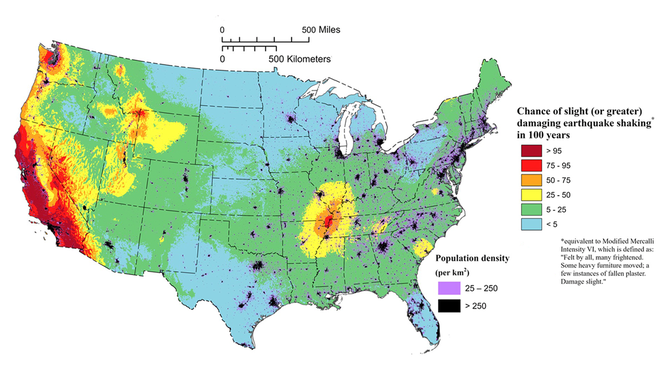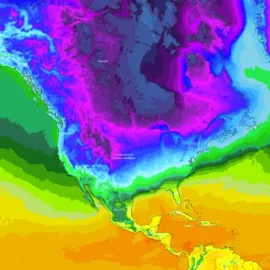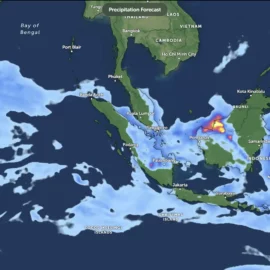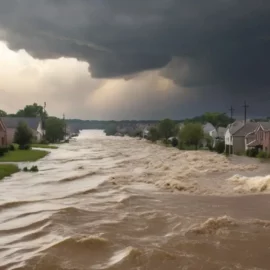
Nearly 75% of the Nation at Risk, According to the National Seismic Hazard Model.
The U.S. Geological Survey (USGS) unveils its latest National Seismic Hazard Model, presenting alarming findings that nearly 75% of the United States could experience intense ground shaking and damage from earthquakes. The model, incorporating the latest seismic studies, historical geological data, and advanced data-collection technologies, reveals critical insights that may impact public policy, engineering practices, and infrastructure planning.

Key Areas Highlighted, Millions of Lives at Risk.
The color-coded map generated by the National Seismic Hazard Model presents a visual representation of risk, with areas shaded in bright red and burgundy, indicating heightened vulnerability. Noteworthy regions include California, parts of the Pacific Northwest, the mid-South, Alaska, and Hawaii. Scientists emphasize that this places hundreds of millions of lives at risk, necessitating heightened awareness and preparedness.
The USGS emphasizes the unpredictability of earthquakes while highlighting the significance of investigating faults and past quake data. By understanding these factors, scientists can assess the likelihood and intensity of future earthquakes. The updated National Seismic Hazard Model aims to establish a standard practice for public policy, engineering decisions, and infrastructure planning.
Among the model's revelations, it indicates that 37 states have experienced earthquakes greater than a magnitude of 5 over the past two centuries. This historical context provides valuable insights for architects, engineers, and policymakers, shaping how buildings and structures are planned and constructed in earthquake-prone regions. The updated model plays a crucial role in enhancing the resilience of communities against seismic threats.
Founder and chief forecaster of the Pogodnik service. He has many years of experience in the meteorological service. He is the author of numerous scientific publications and popular articles about the weather.




